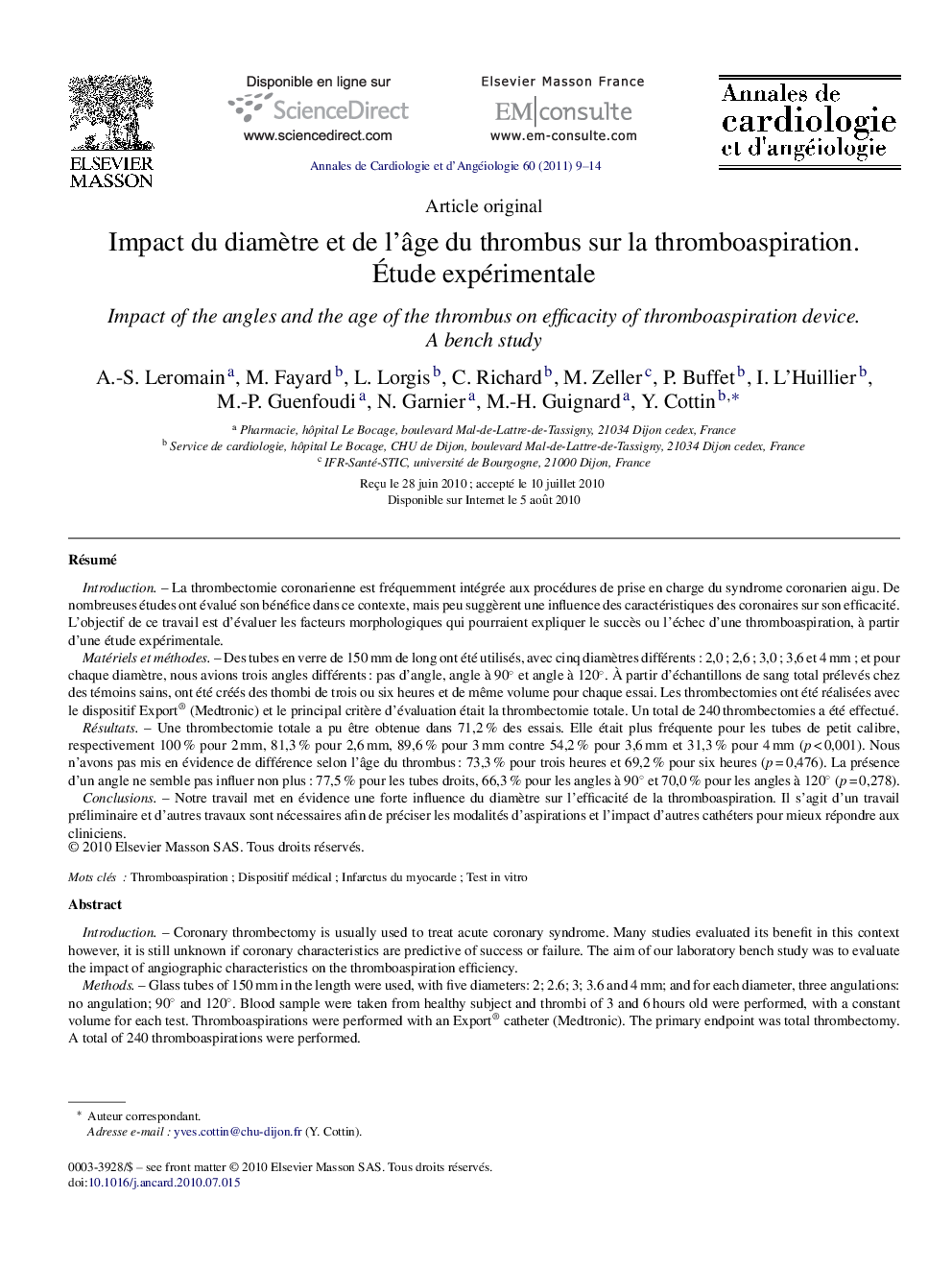| Article ID | Journal | Published Year | Pages | File Type |
|---|---|---|---|---|
| 2869208 | Annales de Cardiologie et d'Angéiologie | 2011 | 6 Pages |
Abstract
A total thrombectomy was obtained for 71.2% of the tests. It was achieved more frequently with the smaller diameter, respectively: 100% for 2 mm, 81.3% for 2.6 mm, 89.6% for 3 mm vs 54.2% for 3.6 mm and 31.3% for 4 mm (P < 0.001). No differences were observed between the 2 thrombi ages (73.3% for the 3 hours old thrombi and 69.2% for the 6 hours old thrombi, P = 0.476), nor between the three tube's angulations (77.5% for no angle, 66.3% for 90° and 70.0% for 120°, P = 0.278). Results and conclusion: This study shows an impact of the coronary diameters on the rate of thromboaspiration success with an Export® catheter. Beyond 3 mm of diameter, the rate of success is divided by 2: for diameters less or equal to 3 mm, 90.3% of success vs 42.7% for diameters greater than 3 mm (P < 0.001). There is no difference of efficiency between the 3 and 6 hours old thrombi, neither between the tube's angulations. However, this is a preliminary and further works are needed to clarify how to optimize the aspiration and the impact of other catheters.
Keywords
Related Topics
Health Sciences
Medicine and Dentistry
Cardiology and Cardiovascular Medicine
Authors
A.-S. Leromain, M. Fayard, L. Lorgis, C. Richard, M. Zeller, P. Buffet, I. L'Huillier, M.-P. Guenfoudi, N. Garnier, M.-H. Guignard, Y. Cottin,
